Today’s job market is fast-paced, challenging, and more competitive than ever. If you’re looking for a new teaching position, you’ll need an impressive resume to stand out from the crowd. A practical overview is one of the keys to unlocking your dream job. A resume that effectively showcases your skills and experience will increase your chances of landing an interview. The primary purpose of an Elementary School Teacher’s resume is to get you in the door for an interview with hiring managers at schools or other educational institutions. It should also give them a snapshot of who you are as a potential employee. That being said, many versions of resumes exist for various job fields and career paths. Depending on where you want to work, you might need a combination of different resumes tailored to that specific industry or company. A strong resume can open doors and help set you apart from other candidates.
Elementary School Teacher Resume Example
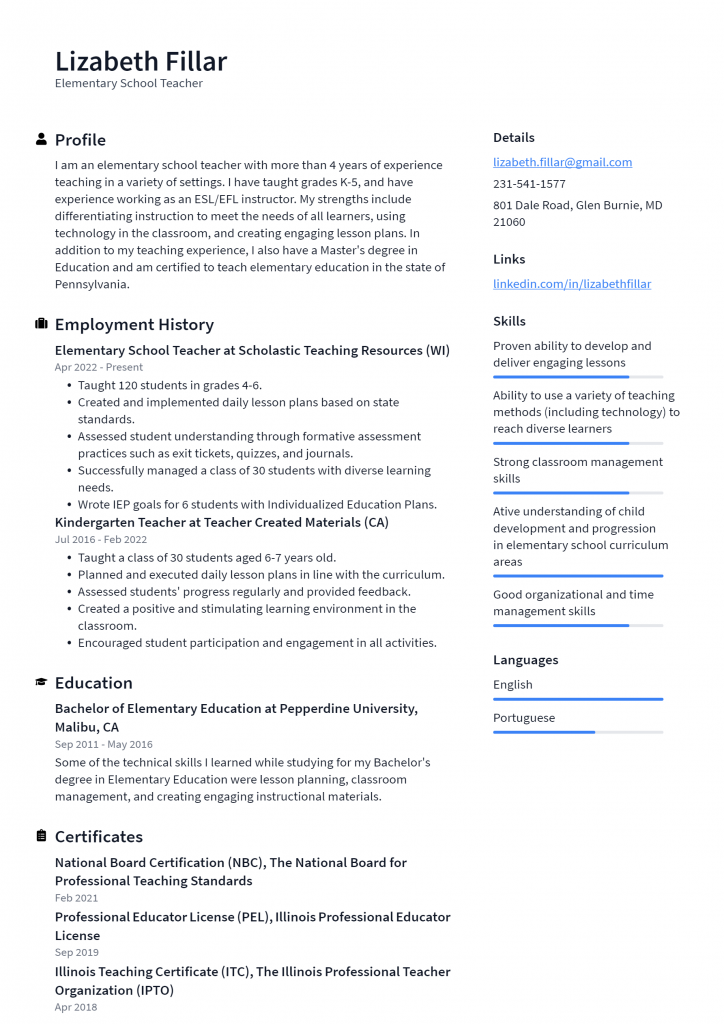
Download This Elementary School Teacher Resume as PDF
4th Grade Teacher Resume Example
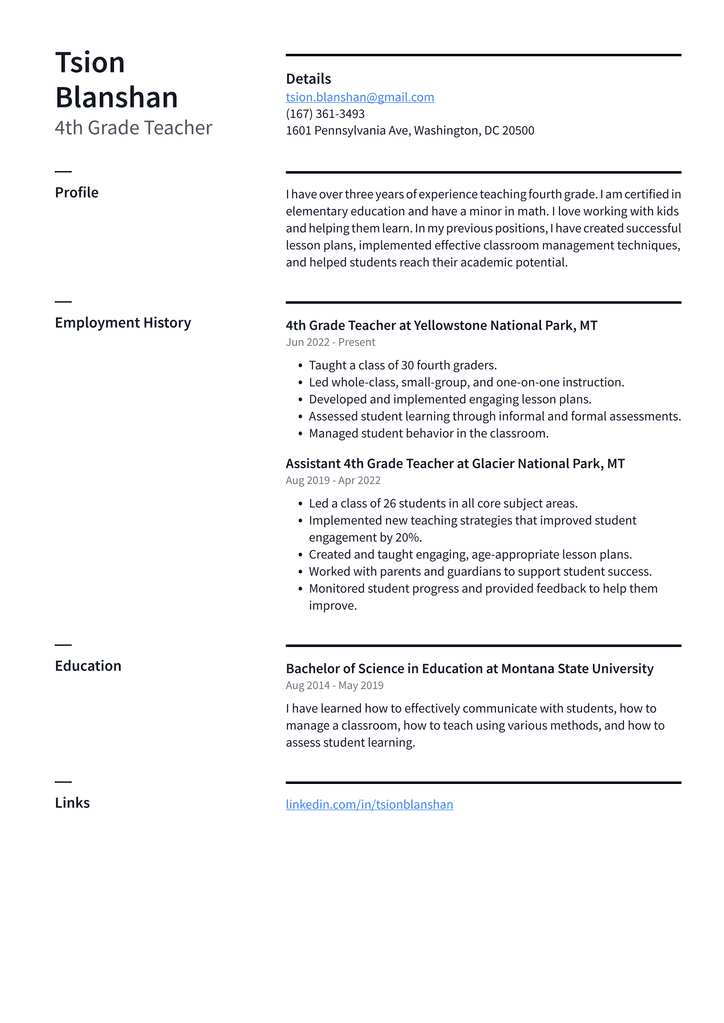
Download This 4th Grade Teacher Resume as PDF
7th Grade Teacher Resume Example
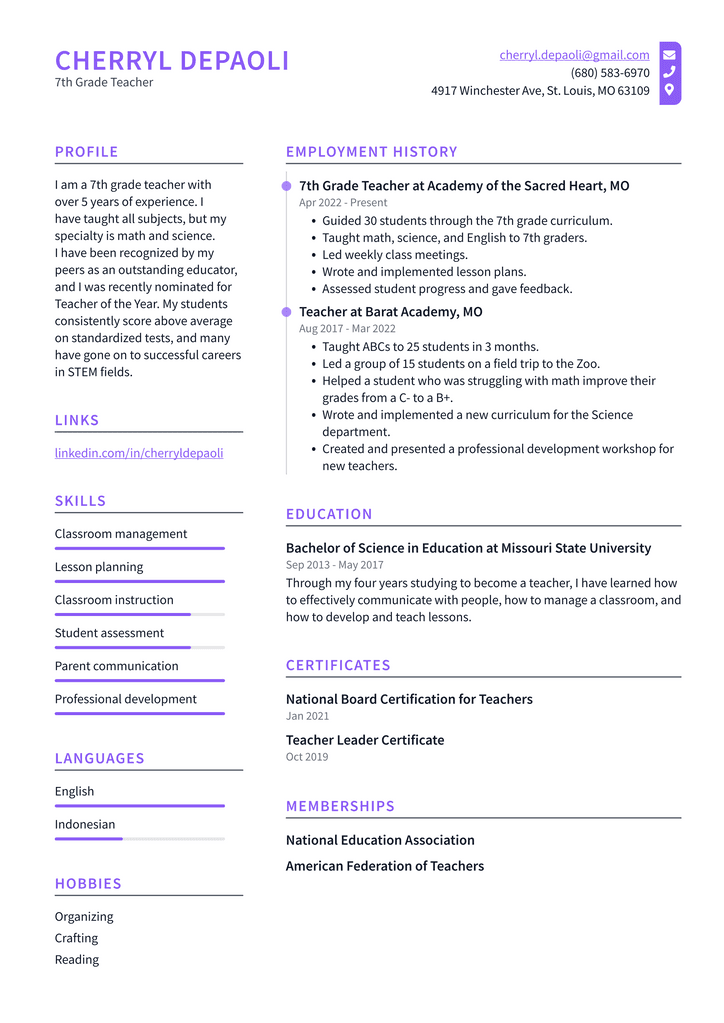
Download This 7th Grade Teacher Resume as PDF
6th Grade Teacher Resume Example
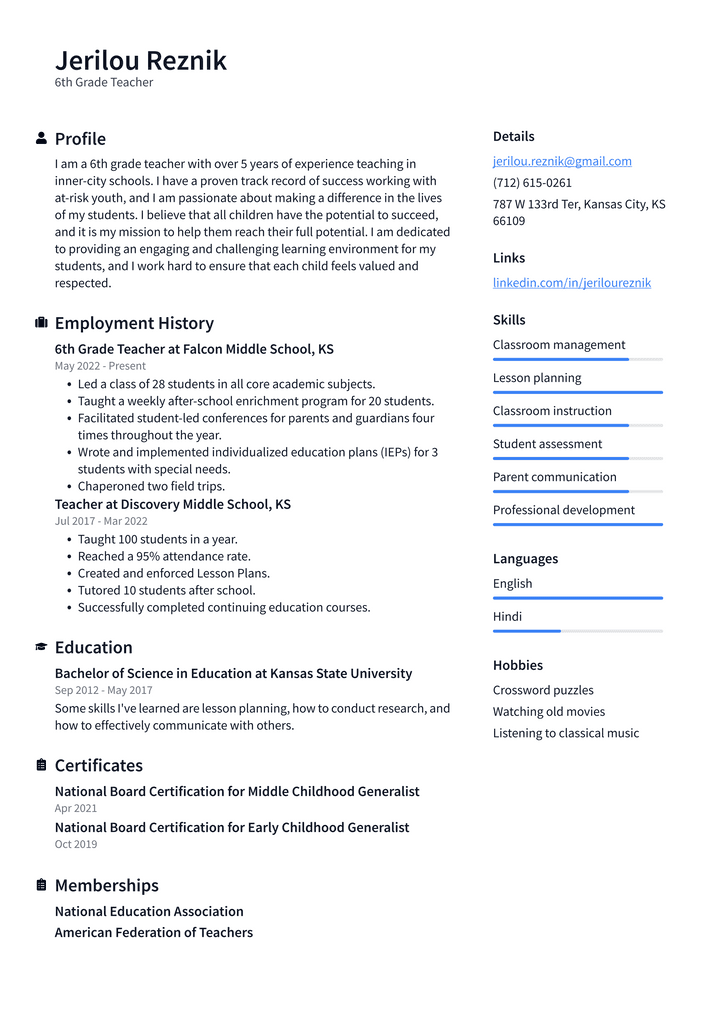
Download This 6th Grade Teacher Resume as PDF
2nd Grade Teacher Resume Example

Download This 2nd Grade Teacher Resume as PDF
5th Grade Teacher Resume Example
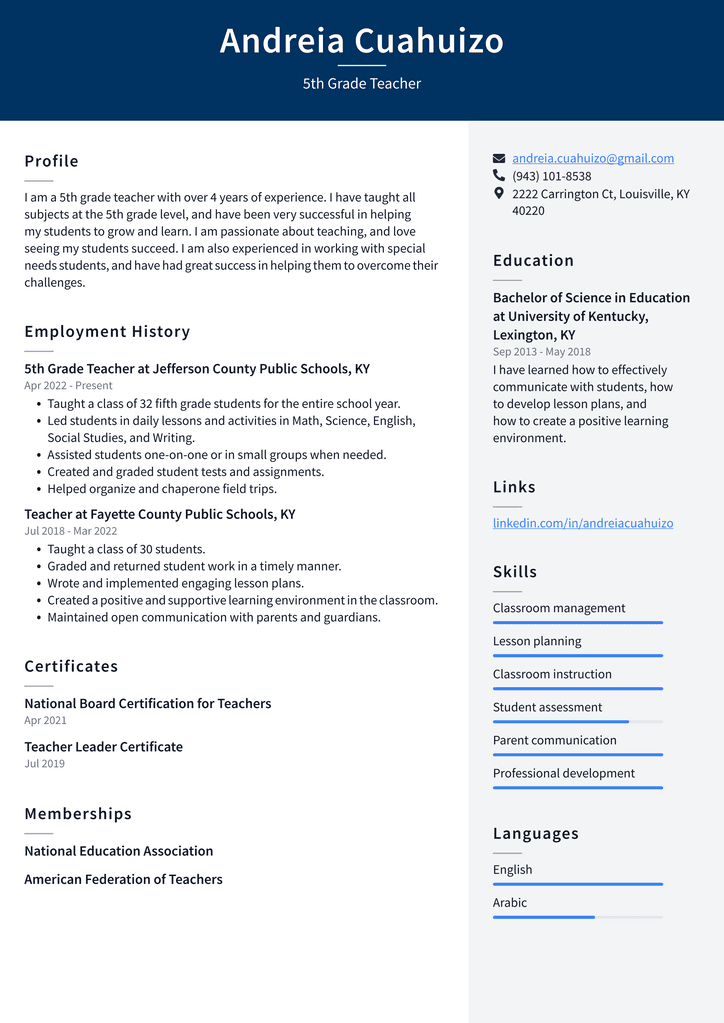
Download This 5th Grade Teacher Resume as PDF
3rd Grade Teacher Resume Example

Download This 3rd Grade Teacher Resume as PDF
Resume Writing Tips for Teachers
When writing a resume, it’s important to remember that hiring managers receive dozens of applications daily. The last thing you want is to have your resume end up in the “no” pile due to simple mistakes or a lack of clarity. Effective resume writing is similar to making a sale. You want to highlight your skills and experience and make a compelling case for why you should be hired for the position. Resumes for teachers have some unique challenges. First, most teachers work part-time and have varied experience. That means it can be tricky to fit everything into one document. You must also show how your skills and experience translate to the non-educational world. This can be tricky, especially if you’re a new teacher.
What to Include in an Elementary School Teacher Resume
The first thing a reader notices when looking at your resume is the “header.” The header should include your name, address, phone number, and email address. Make sure all of these are correct and that your email address is professional, not silly or jokey. The next thing they see will be the “job objective.” This is a brief statement that describes the job you are seeking. The next thing they see will be a “career summary.” This tells your professional’s story, using the “who, what, where, when, why” method. The next thing they see will be a “qualifications summary.” This will be like a mini-resume summarizing all of your experience and skills in a couple of paragraphs.
CV vs. Resume
CV stands for “curriculum vitae.” It’s more like a summary of your life, including all education, experience, achievements, publications, etc. So it’s a bit more comprehensive and includes more than just your work experience. A resume is a more general term for what you’d use to apply for jobs. The primary difference between a CV and a resume is that a CV is supposed to be a complete summary of everything related to your education and work experience, including your skills, achievements, publications, and other things. In contrast, a resume is a shorter document that only contains the necessary information about your work experience and academic qualifications.
Organizing Your Resume
The best way to organize your resume is by chronology. Start with your most recent experience and work backward. This makes it easy for hiring managers to follow their career stories. It also makes it easy to add new experiences and skills as you progress in your career. For example, once you get hired and start teaching, you can add that experience to your resume. Many experts recommend breaking your resume into two or three sections. For example, you can separate your education, knowledge, and skills. Or you can organize it by industry or field of interest. The important thing is to find an organizational structure that works for you and makes the most of your resume space.
Key Skills to Include
Since you’re applying for an education position, you’ll want to focus on education-related experience and skills. But don’t ignore other essential skills that will help you succeed in the classroom and the work world. Skills that are especially important for educators include Interpersonal communication (both verbal and written), Critical thinking, and problem-solving Organization Managing multiple priorities and deadlines Managing stress and time effectively Teamwork Curiosity and openness to new ideas Ethical and responsible decision-making Computer skills are helpful for any career. Hence, it’s a good idea to include them on your resume, even if you only apply to teaching positions.
Conclusion
A great resume is more than just a list of your past experiences. It is a marketing document highlighting your skills, strengths, and values that make you a great candidate. Keep these things in mind when you are writing your resume, and you are sure to create an excellent document that will help you get your dream job! Remember, the most crucial step in the job search process is to create a great resume that effectively highlights your skills and experience. A well-written and professionally presented resume is the most crucial document in your job search.